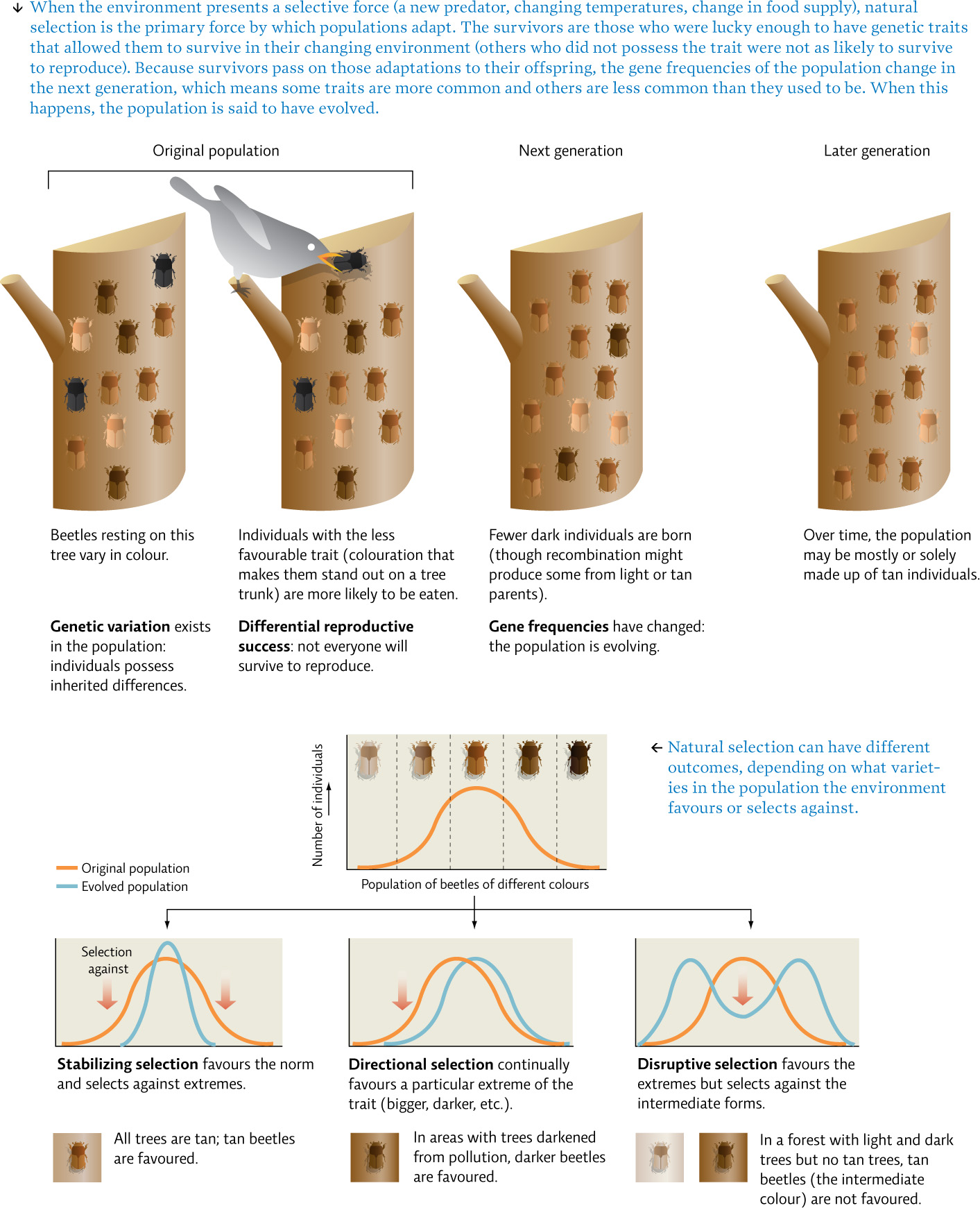10.2 Natural selection is the main mechanism by which populations adapt and evolve.
Before they started disappearing, the birds of Guam were a diverse and resplendent bunch. The island, about a tenth the size of Price Edward Island, was home to 18 native species of birds, each specially suited to life on the island.
Populations usually contain individuals that are genetically different from one another. According to the evolutionary theory first put forth by Charles Darwin and Alfred Russel Wallace, and subsequently supported by a tremendous amount of evidence from a wide variety of scientific disciplines, selective pressure on a population—a nonrandom influence affecting who survives or reproduces—favours individuals with certain inherited traits over others (such as better camouflage, tolerance for drought, or enhanced sense of smell). These individuals have differential reproductive success: they are best suited for their environment and leave more offspring than those who are less suited for their environment. The traits that an environment favours are called adaptations, and the process by which organisms best adapted to the environment survive to pass on their traits is known as natural selection. Evolutionary biology helps us understand the diversity of life on Earth and how populations change over time. It is one of the pillars of biological science, and the vast amount of evidence in support of both the occurrence of evolution and the mechanisms by which it happens has elevated this explanation to the level of scientific theory (see Chapter 2).
For most populations, more offspring are born than can survive, since resources are limited and many species produce large numbers of young. Since only some individuals will survive, over time, the population will contain more and more of these better-adapted individuals and their offspring. Ultimately, this changes how common certain genes are in the population—the frequency (percent in the population) of some genes increases and that of others decreases. When this occurs, the population has experienced evolution, or changes in the gene frequencies within a population from one generation to the next. Natural selection may be stabilizing, directional, or disruptive, depending on which genetic traits are favoured or selected against. [infographic 10.1]

It is important to note that individuals are selected for, but populations evolve; individuals do not change their own genetic makeup to produce new necessary adaptations, such as bigger size or pesticide resistance. If they get the opportunity to reproduce, they pass their traits on to the next generation. If they cannot tolerate environmental changes, as was the case with the first bird species to disappear from Guam (the bridled white-eye), they die or fail to reproduce and do not pass on their genes. Individuals may be able to adjust their behaviour to accommodate environmental changes, but if a trait is not genetically controlled, and therefore is not heritable, it will not influence the composition of the next generation.